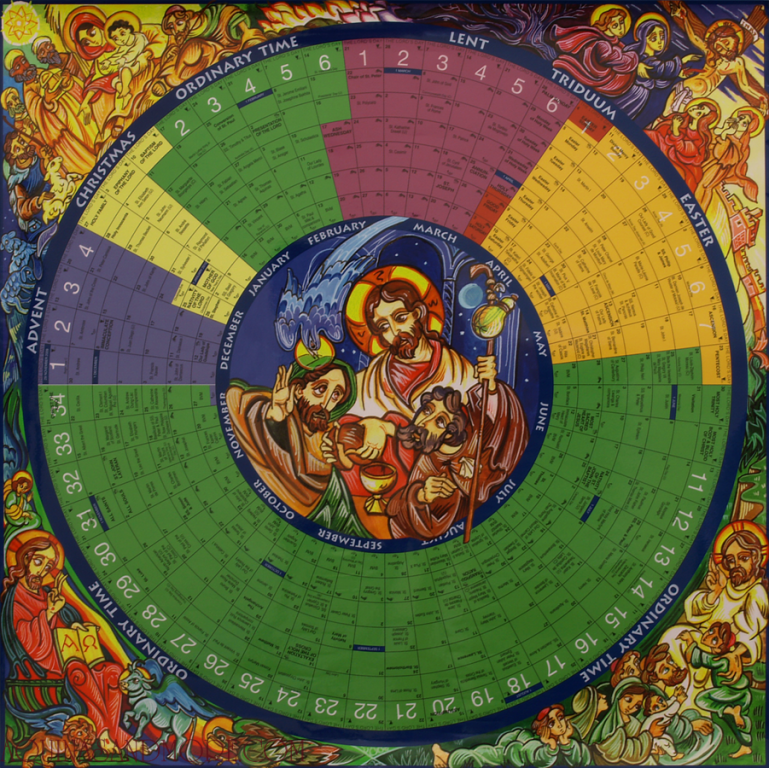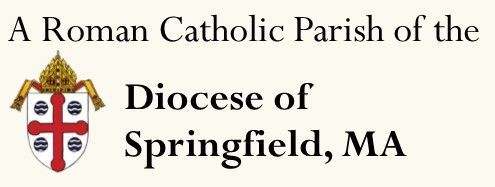Liturgical Year

Our Catholic liturgical calendar offers us the opportunity to explore and reflect upon different aspects of our Catholic faith and history of our Church each year.
Our Catholic liturgical calendar offers us the opportunity to explore and reflect upon different aspects of our Catholic faith and history of our Church each year.
Advent
The Catholic New Year’s celebration begins earlier than most: Our Church year begins at the start of Advent, which begins in late November-early December. This is a period of waiting and preparation, as we prepare for the coming of the Lord at Christmas. There are four Sundays in Advent, and it concludes on December 24.
Christmas
We celebrate Christ’s coming with Christmas on December 25. The Feast of Christmas lasts twelve days, until the Epiphany, which in the readings is marked by the visit of the Magi, or the Wise Men. However, the Christmas season lasts an additional week, through the Feast of the Baptism of Our Lord.
Ordinary Time – Part I
When the Christmas season comes to a close, we enter into Ordinary Time, which takes us from Christ’s childhood through the early parts of His ministry.
Lent
Lent is a time of prayer, fasting and almsgiving when we are called to repent and return to the Lord with all our hearts. The season is 40 days—not including Sundays—and begins with Ash Wednesday. On this day, we receive a cross of ashes on our foreheads and are reminded that from dust we came, and to dust we will return. The 40 days is representative of the time Jesus was tested by Satan in the desert prior to beginning His ministry.
The final Sunday of Lent is Palm Sunday, when we enter Holy Week and receive palms in remembrance of Jesus’ triumphant entry into Jerusalem. On Holy Thursday of this week, we remember the Passover Christ shared with His disciples.
On Good Friday, we commemorate the Lord’s Passion—His suffering and death on the cross. Holy Saturday is a day of waiting until Easter Vigil Saturday evening, when we celebrate Jesus’ passage from death to life.
Each year the Lord Jesus calls the entire Church to a special season of penance and renewal. As we begin this holy time of Lent, we should reflect on our need for conversion of heart, prayer, charitable works and penance. The season of Lent extends from Ash Wednesday to the Mass of the Lord’s Supper.
♦ Everyone 14 years of age or over is bound to abstain from meat on Ash Wednesday, Good Friday and all Fridays of Lent.
♦ Everyone 18 years of age and under 59 years of age is also bound to fast on Ash Wednesday and Good Friday.
On these two days of fast and abstinence, only one full meatless meal is allowed. The other meatless meals, sufficient to maintain strength, may be taken according to one’s needs, but altogether they should not equal another full meal. Eating between meals is not permitted on these two days, but liquids, including milk and fruit juices are allowed. When health or the ability to work would be seriously affected, the obligation is modified. Because Lent is a special season for all Christians, we should not lightly excuse ourselves from these practices.
Easter
The Easter season begins with Easter Vigil on the evening of Holy Saturday and continues until Pentecost. This is our most joyous season as we celebrate the Resurrection of the Lord. The Easter Season lasts 50 days and at Mass, we recount the Risen Christ’s visits to the Apostles, Jesus’ Ascension into heaven, and on Pentecost, the descent of the Holy Spirit upon the Apostles.
Ordinary Time – Part II
After Pentecost until the next liturgical year begins in Advent, we enter into the longest period of Ordinary Time. During this time, we focus on Christ’s reign and prepare for His second coming. The final Sunday of this Ordinary Time, the Feast of Christ the King, is representative of His reign.
